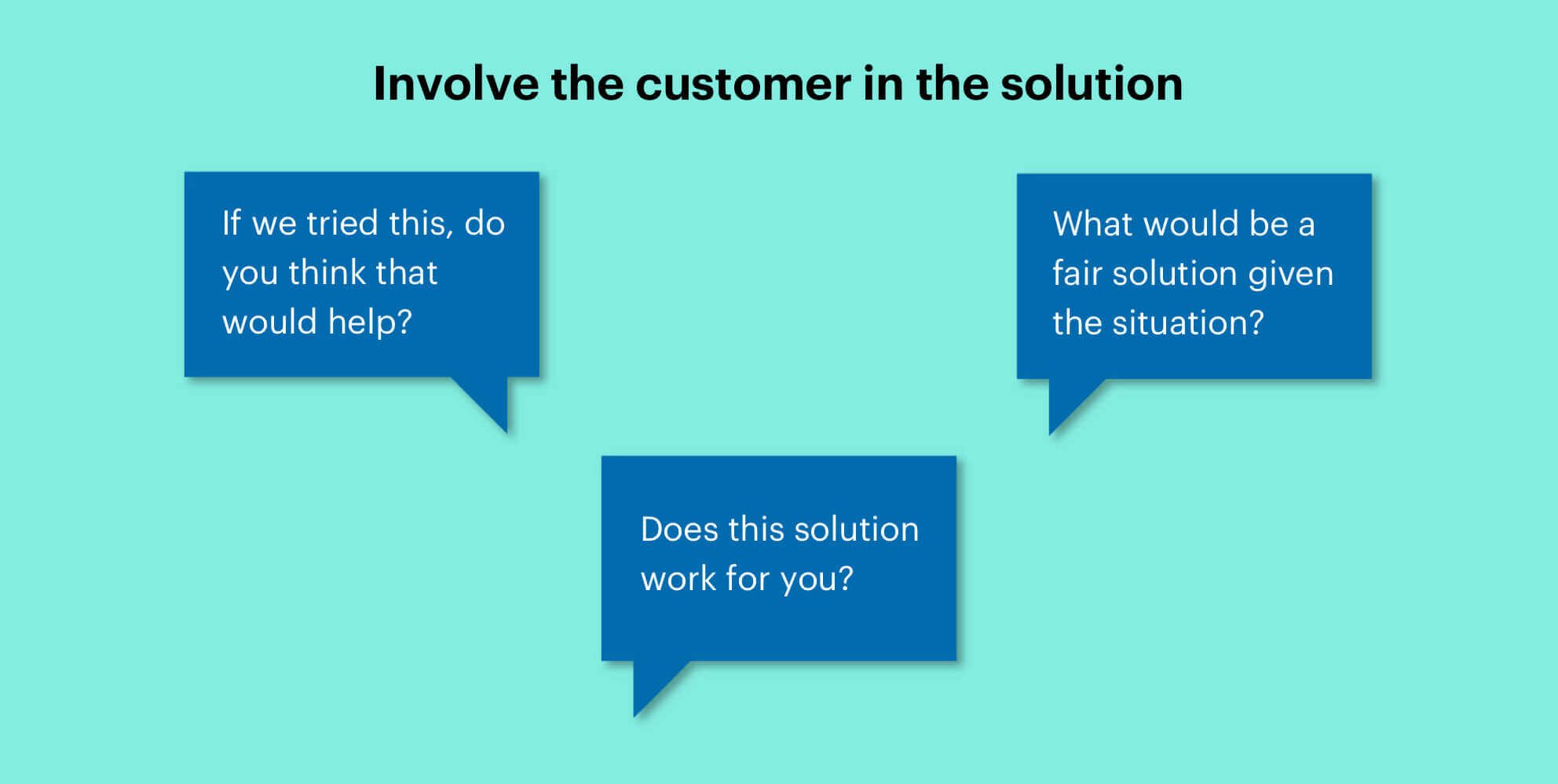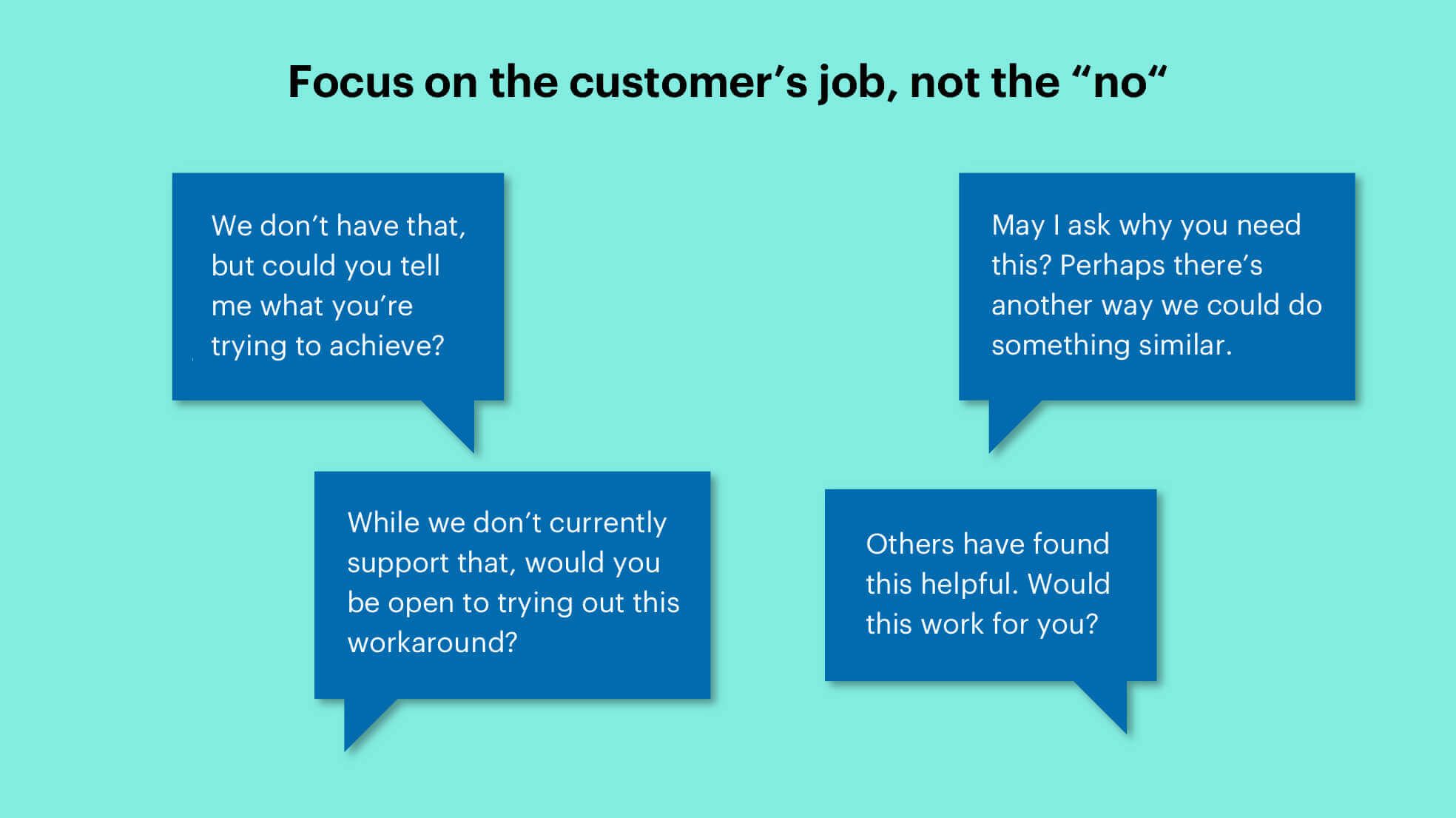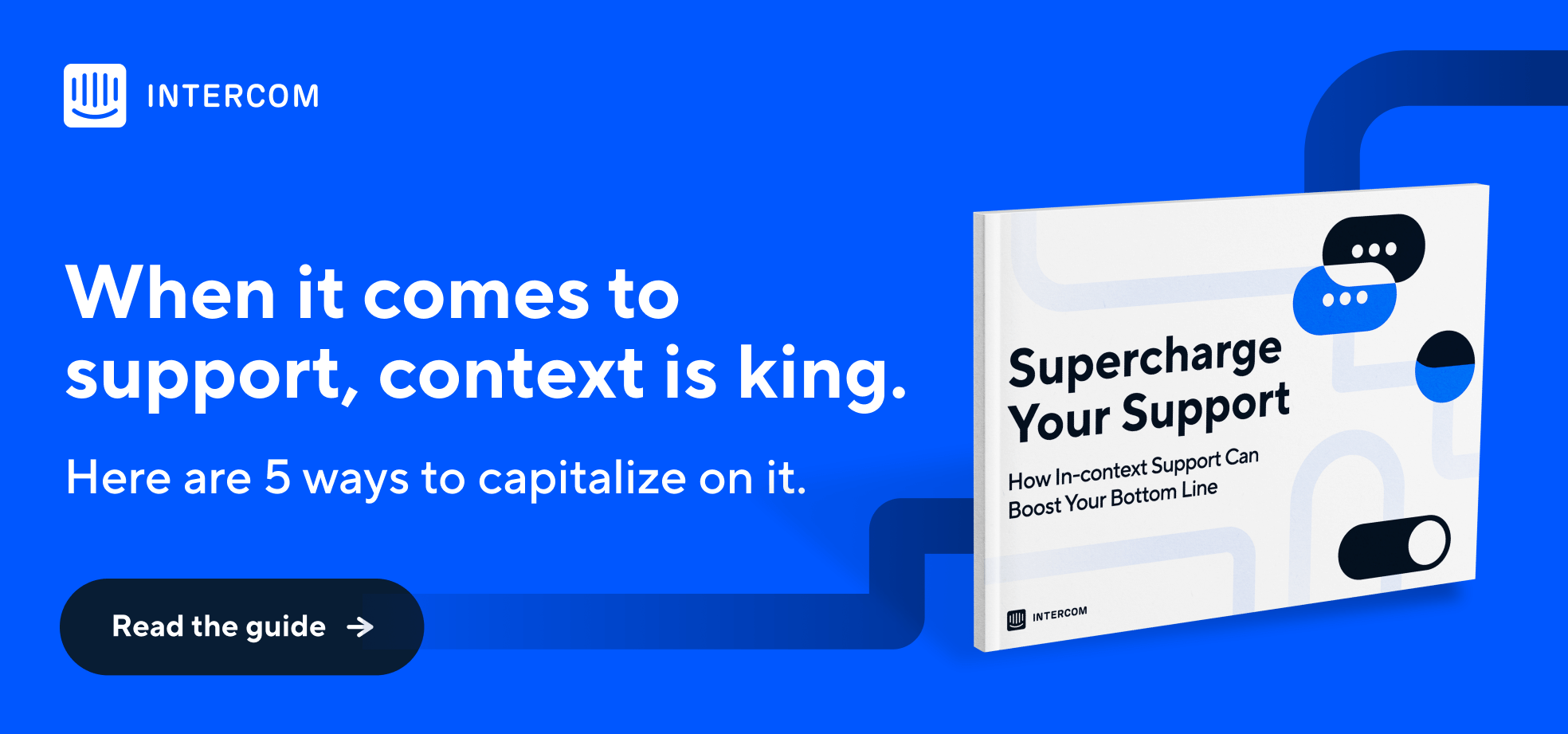
How do you say no to customers?
Main illustration: James Heimer
Building a successful product means saying no. But exactly how do you say it?
When you’re on the front lines talking to customers, delivering that news successfully is imperative.
Ask any support rep and they’ll tell you just how tricky rejecting a customer’s request can be. The information you’re about to share is not what they want to hear, and if it’s communicated poorly it can quickly turn an otherwise happy user into an angry customer.
Luckily, with the right approach you can let the customer down gently without causing a blowup. Here are six ways that you can make saying “no” more palatable for the customer – and easier on you.
1. Say no by explaining why

Like any time you’re receiving bad news in life, context is key. If you can explain why you’re saying no, it’s an easier pill for your customer to swallow. Without it, you’ll likely find yourself in a situation where your customer feels angry, frustrated, or just disappointed.
The first step to saying no is clearly explaining that the situation isn’t the result of a mistake but a deliberate decision. Imagine if a customer writes in with an urgent feature request – if they feel like your “no” is due to a sloppy oversight or a refusal to listen, you’ll only stoke their anger. On the other hand, reassuring them that the decision reflects your company policy or product vision can quell their frustration while still making them feel heard.
“Having a line of communication with our product team means we can say no with the right level of detail”
For feature requests, a good relationship between customer support and your product team can help provide much needed context into why certain choices have been made. Our support reps will routinely run through the logic behind product decisions with our engineers and product managers. Having that line of communication means we can say no with the right level of detail.
2. Don’t change your tone of voice

At Intercom, we provide conversational support via our Business Messenger. When you’re chatting with customers about their success with your product, it’s easy to be personal and all sunshine and GIFs. But something I’ve seen happen often with support reps is that the second customers confront them with a difficult situation, they stiffen up and their language completely changes. Their human tone suddenly becomes robotic.
But this is exactly when being personal is most important. From the customer’s perspective, a stiff “no” can come off as a lack of empathy for their situation or as you parroting a stock company line (whether you’re a small business or large). While it’s natural to feel uncomfortable saying no to customer requests, suddenly changing your tone will only make an already stressful customer experience even worse.
Instead, you should remain personal and look for a positive way to say no. If in doubt, ask yourself if you’d use the same tone of voice to explain the situation to a friend or colleague. If it would feel weird speaking to them that way, then don’t speak that way to your customer.
3. Involve the customer in the solution

Things go wrong and mistakes happen – that’s the nature of growing a business. Unexpected bugs crop up and customers are negatively affected. We’d all like to have a bulletproof explanation for every issue a customer might face but the reality is that just isn’t possible.
Involving the customer in the resolution can help them empathize with you and even strengthen the customer relationship. It also helps you get a fuller picture of what’s going on and allows you to really understand why and how they were affected.
“Involving the customer in the resolution can help them empathize with you and even strengthen the customer relationship”
Using positive language to ask things like “What do you think would be a fair solution?” and “How does that sound to you?” can bring customers into the conversation; this communicates that you take customer satisfaction seriously. You can also refer customers to resources in your knowledge base which can be another avenue of assistance.
Inevitably there will be times when a hard line has to be drawn and you will need to push back. But when you involve the customer in finding alternative solutions, it can be the catalyst for both sides to take a pragmatic approach to difficult situations.
4. Focus on the job to be done, not the “no”

At Intercom, we discourage our support reps from simply saying, “You can’t do that at the minute, but we’ll pass it on as a feature request.” Granted, sometimes this response is the only one that makes sense. But more often not, there are ways we can identify something realistic that the customer wants and help them achieve it in a different way.
Our approach is to move the focus of the conversation from a specific feature to the customer’s goal. We’ll ask a few more probing questions to find out exactly what their objective is. Best case scenario, there’s an existing workaround. Worst case scenario, we’ll now have extra context to pass on to our product team.
5. Breaking up with your customer is okay too
As a SaaS business, customer retention is one of our top priorities – when we find loyal customers who stick around and grow, we grow. This belief is so ingrained that breaking up with a customer can feel like an alien concept. It can be a really tricky thing to get your head around.
“Nobody wants a disillusioned customer who constantly contacts support because they’re using your product in a way that it’s simply not designed to work”
But there are legitimate reasons why customers should offboard from your product. The fact is your product will never meet every customer’s needs. You’ve designed it to do specific jobs in specific ways. Nobody wants a disillusioned customer who constantly contacts support because they’re using your product in a way that it’s simply not designed to work.
At Intercom, we want customers to love our product and really feel the value of it. So if what they want to accomplish is not something that our product is built to do, then we accept that the customer’s needs and our product are not a good match. They’re never going to feel they’ve found success. In those cases, while we’ll be sad to part ways, we won’t shy away from it.
6. Have empathy for both sides
We believe in always showing empathy to our customers – but never to the point that we sell our own product short. It’s fine to agree that you too would love to see a certain feature added. After all, ensuring your product delivers value for the long term means always innovating on it.
However, we try to balance acknowledging customer feedback about our product with sharing new features that have recently shipped or improved on. Reminding customers about what’s new can help reinforce that your product and engineering teams didn’t just forget or overlook building the features they requested; rather, you made a deliberate decision that other features would take priority.
“We believe in always showing empathy to our customers – but never to the point that we sell our own product short”
This is another reason to invest in a strong relationship between your customer support and product teams. Being close to your product team, knowing what they’re working on, enables support reps to have empathy for your customers and your colleagues in equal measures.
Say no with confidence
Being able to say no to customers and say it with confidence is not a simple skill to master. It takes time and practice and even the most seasoned support rep can find it difficult. The key to having these conversations in a positive way is a deep understanding of your company’s mission – and an equally deep empathy for your customers.









